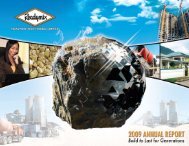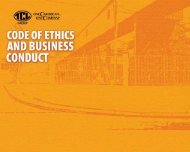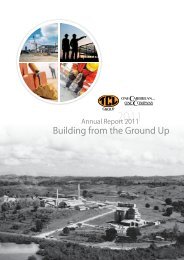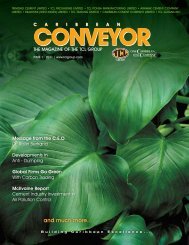2006 - Eastern Caribbean Securities Exchange
2006 - Eastern Caribbean Securities Exchange
2006 - Eastern Caribbean Securities Exchange
Create successful ePaper yourself
Turn your PDF publications into a flip-book with our unique Google optimized e-Paper software.
Notes to the Consolidated Financial Statementsfor the year ended 31st December, <strong>2006</strong>Expressed in Thousands of Trinidad and Tobago dollars24. Financial instruments (continued)The fair value of the long term portion of the loan financing as at 31st December, <strong>2006</strong> is estimated tobe $1,093.3 million (2005: $1,127.9 million) as compared to its carrying value of $1,183.6 million (2005:$1114.5 million).Credit riskThe Group has no significant concentration of credit risk. It is the Group’s policy that all customers whowish to trade on credit terms are subject to creditworthiness review procedures.Liquidity riskThe Group monitors its risk to a shortage of funds by considering planned and probable expendituresagainst projected cash inflows from operations, from the settlement of financial assets such as accountsreceivables and from approved bank credit facilities. The Group’s objective is to fund its operations andactivities within borrowing and preset financial ratio limits that include ‘current ratio’ and ‘scheduledexpenditure to cash from operations’ metrics.Capital ManagementThe primary objective of the Group’s capital management is to ensure that it maintains a healthy financialposition in order to support its business activities and maximise shareholder value. The Group hasestablished several financial ratios and other quantitative targets to guide the management of its capitalstructure. Important amongst these targets are a Current ratio of not less than 1.25, Debt to Ebitda(Earnings before Interest, Tax and Depreciation) of not more than 3 and Long Term Debt to Group Equityof not more than 1.25. Financial information by segmentThe Group’s primary reporting segment is determined to be business segments. Secondary informationis reported geographically. The operating businesses are organised and managed separately accordingto the nature of products and services provided.Annual Report <strong>2006</strong>33













